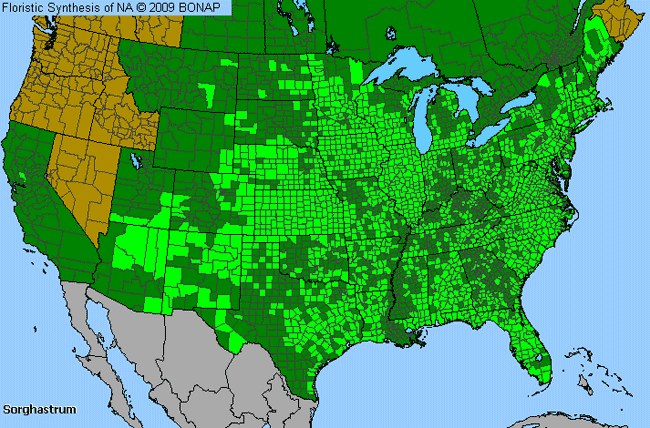Indian Grass (Sorghastrum)

Indian Grass Genus Details

Indian grass has stems called culms which are 1-2.5 m in loose tufts from short rhizomes (underground stems) which are smooth except for the nodes. Blades on Indian grass are 5-10 mm wide. The flowering clusters, called panicles, are 1-3 dm, narrow and freely branched with a golden color. Indian grass is found in moist or dry prairies, open woods and fields. It is an important constituent of tall-grass prairies. It blooms in late summer to early autumn.
Indian Grass Allergy Info

Although the grass family in general is considered significant allergenically, this genus is not typically considered to be problematic.
Indian Grass Pollen Description

Grains are spheroidal to ovoidal, sometimes elliptical. The exine is thin and the surface is granular to finely reticuloid. Pocaceae apertures are 1-porate, with the pores usually circular to ovoidal.
Grains are 22-122 micrometers in diameter.

This plant belongs to the grass family. All pollen grains in this family are similar to the Poaceae (grass) grain pictured here. Herb. MIN

This plant belongs to the grass family. All pollen grains in this family are similar to the Poaceae (grass) grains pictured here. Herb. MIN
Species in This Genus

Allergenicity Legend:
 Mild Allergen |
Mild Allergen |
 Moderate Allergen |
Moderate Allergen |
 Severe Allergen |
Severe Allergen |
 Allergy Test Available
Allergy Test Available
Indian Grass (Sorghastrum) is a genus of the POACEAE family.
This genus includes the following allergenic species:
This genus includes the following allergenic species:











